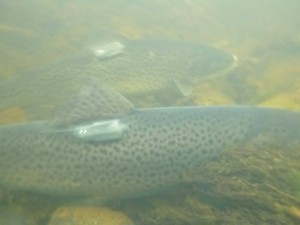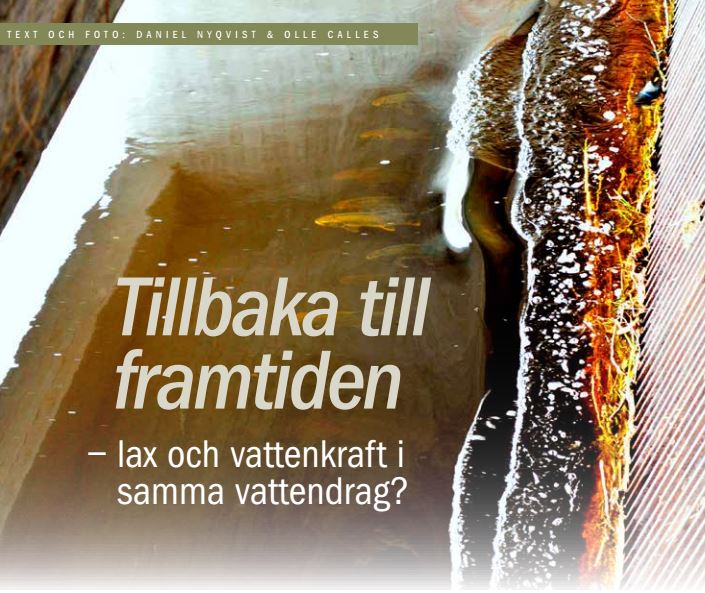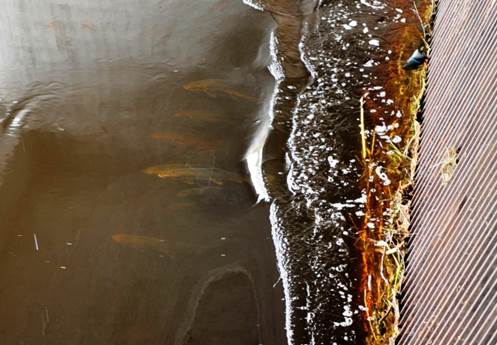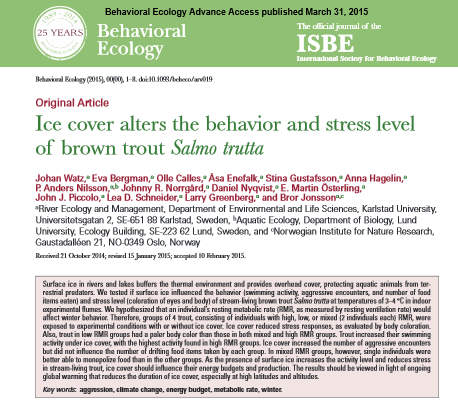Paper: Wood addition in the hatchery and river environments affects post-release performance of overwintering brown trout
Posted by Karl Filipsson | Papers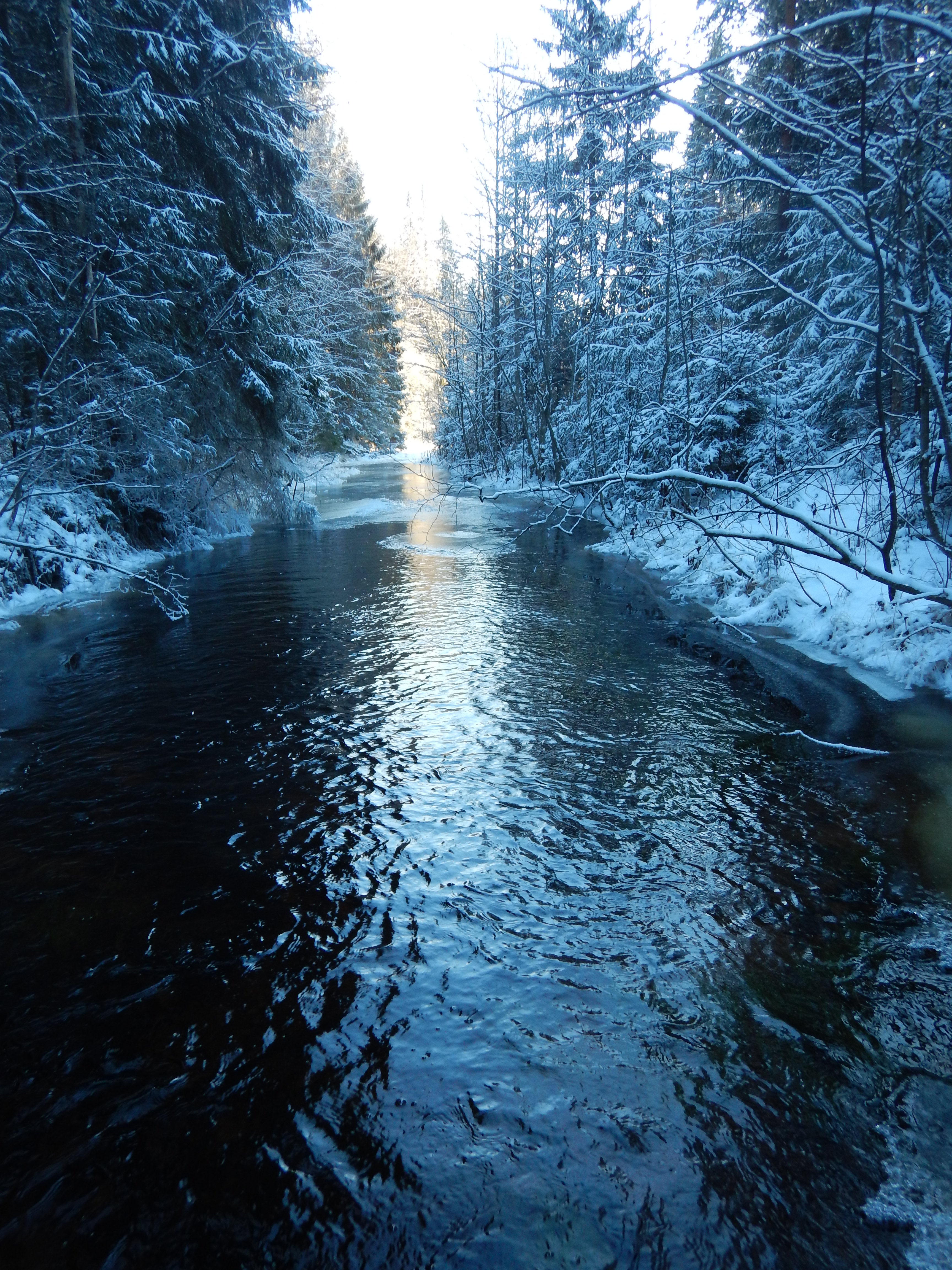
River Rottnan in winter
Johan Watz, Olle Calles, Niclas Carlsson, Teemu Collin, Ari Huusko, Jörgen Johnsson, Anders Nilsson, Johnny Norrgård and Daniel Nyqvist recently published the paper “Wood addition in the hatchery and river environments affects post-release performance of overwintering brown trout” in the journal Freshwater Biology.
In the abstract, the authors write:
“1. Habitat structural complexity affects the behaviour and physiology of individuals, and responses to the environment can be immediate or influence performance later in life through delayed effects.
2. Here, we investigated how structural enrichment, both pre-release in the hatchery rearing environment and post-release in the wild, influenced winter growth and site fidelity of brown trout stocked into side channels of a regulated river.
3. Experiencing structural enrichment in the rearing environment during 3 months in autumn had no pre-release effect on growth, but a delayed positive effect after release during the subsequent winter. Moreover, trout recaptured in wood-treated sections of the side channels had grown more than trout recaptured in control sections. Wood enrichment in the side channels also increased overwinter site fidelity.
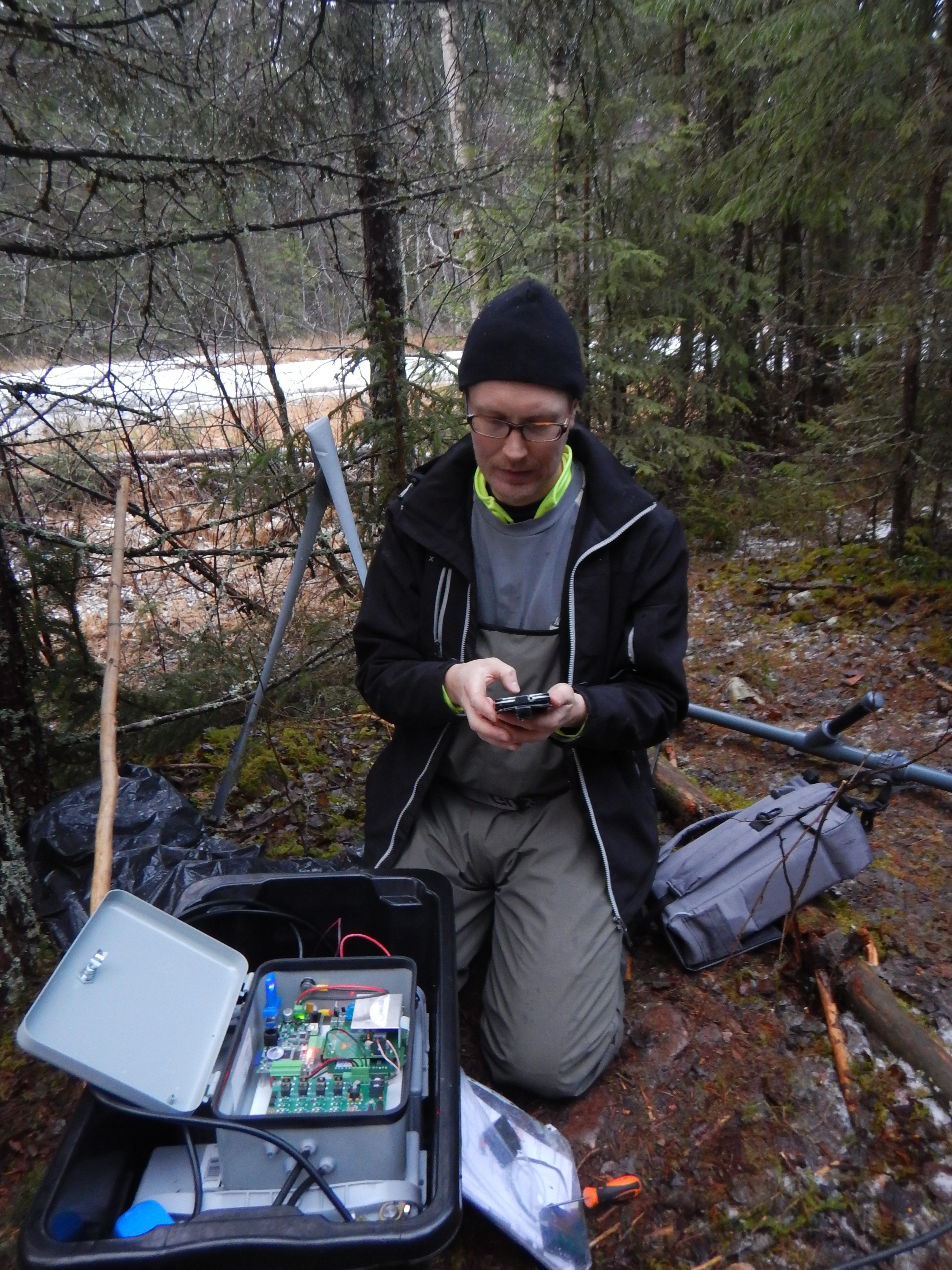
Johan Watz at the field site.
4. These results show that adding structure during a relatively short period may alter growth trajectories, and adding wood to side channels is a cost-effective method to enhance winter habitat carrying capacity for juvenile salmonids in regulated rivers.”
Access the paper here.
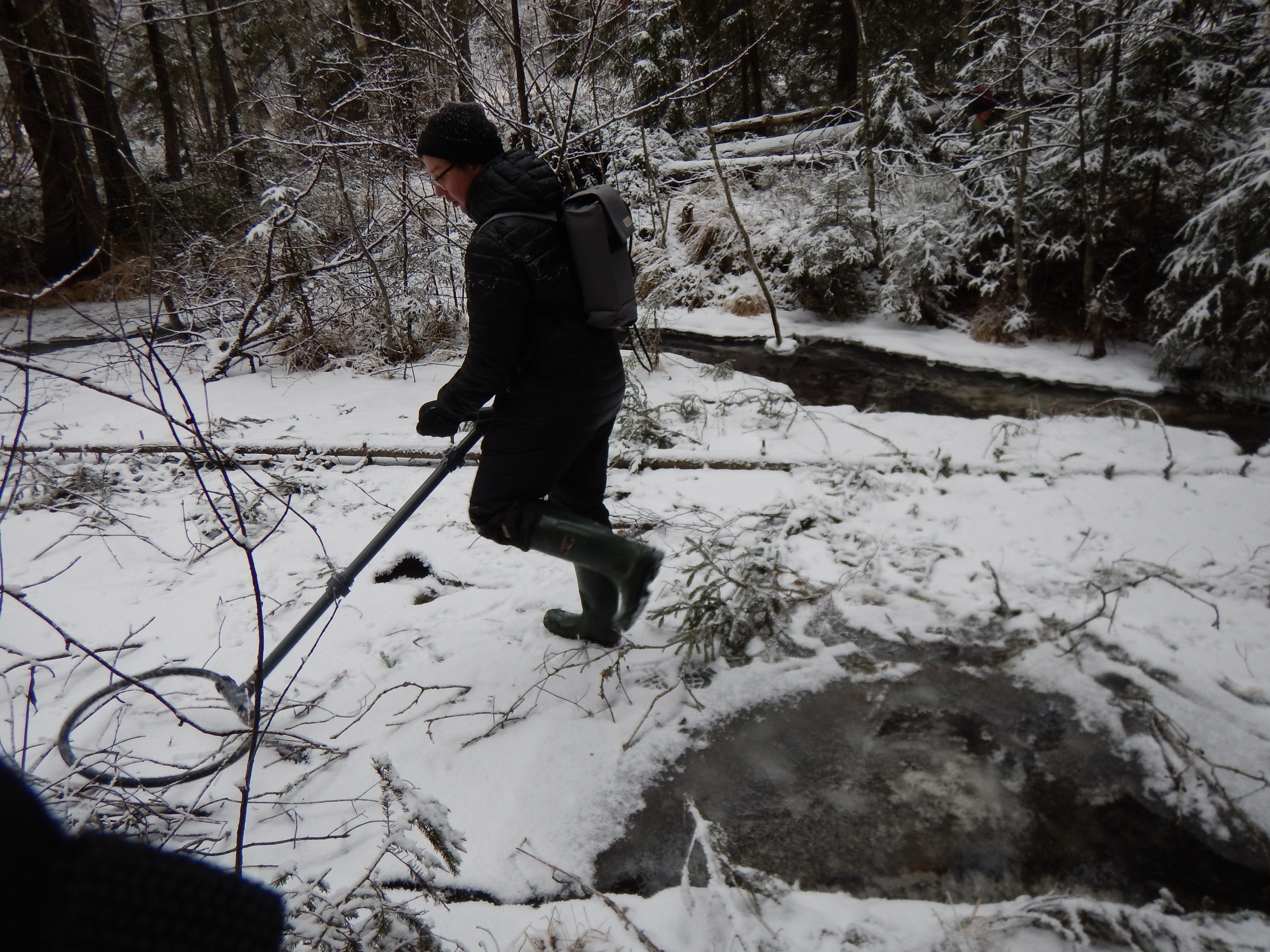
Teemu Collin tracking trout at the field site.
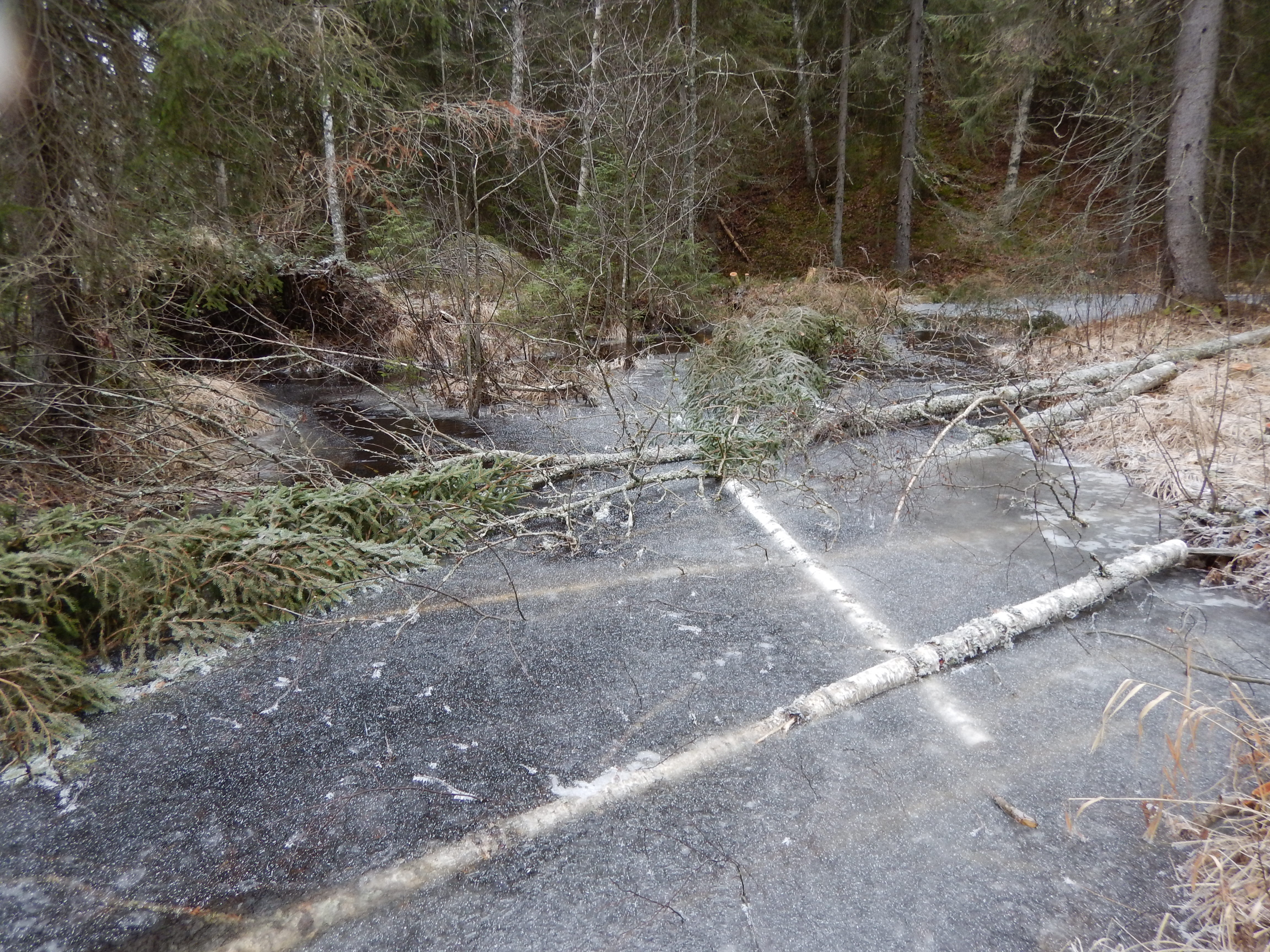
Dead wood in a side channel of the river.
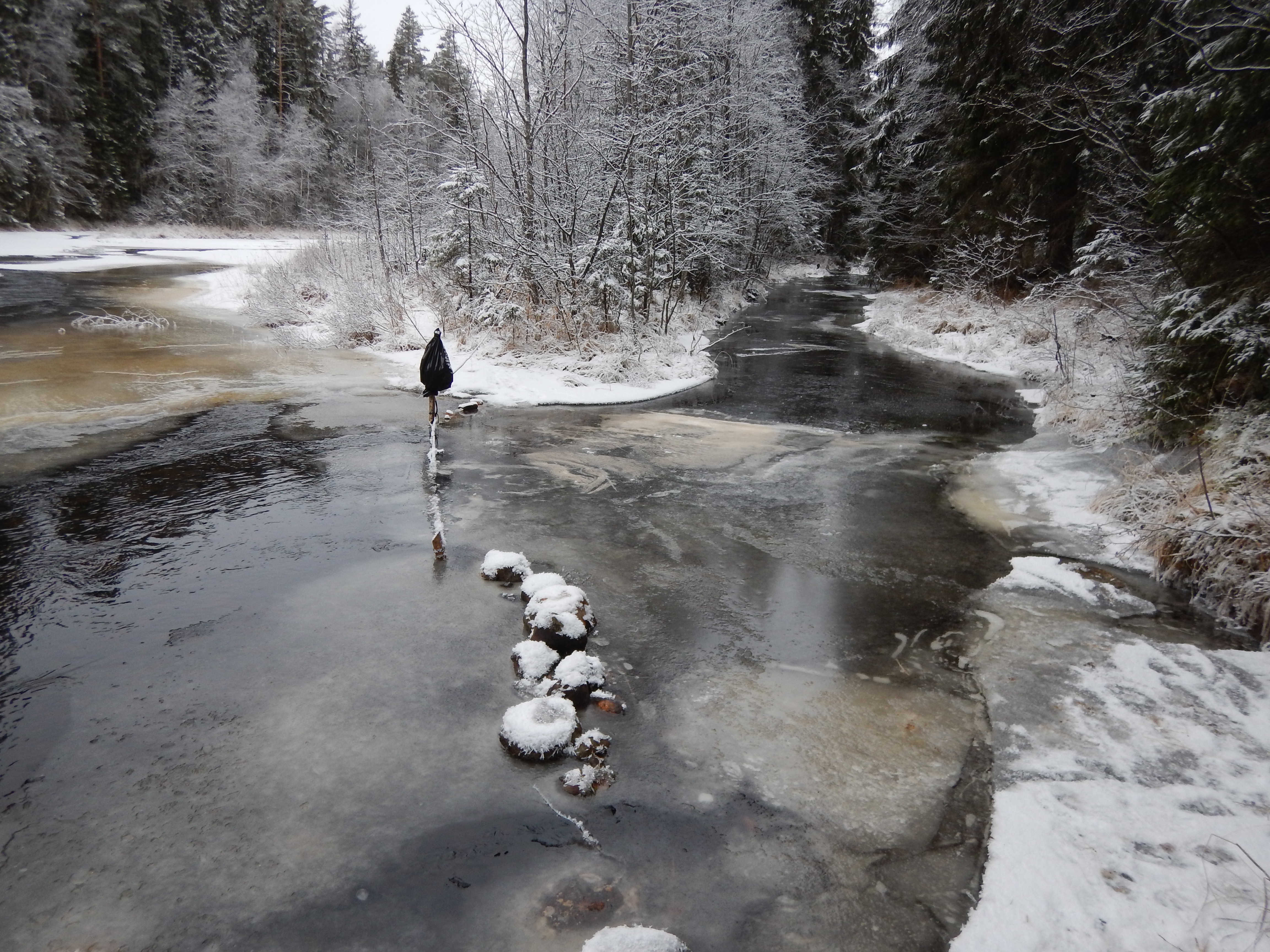
River Rottnan.



